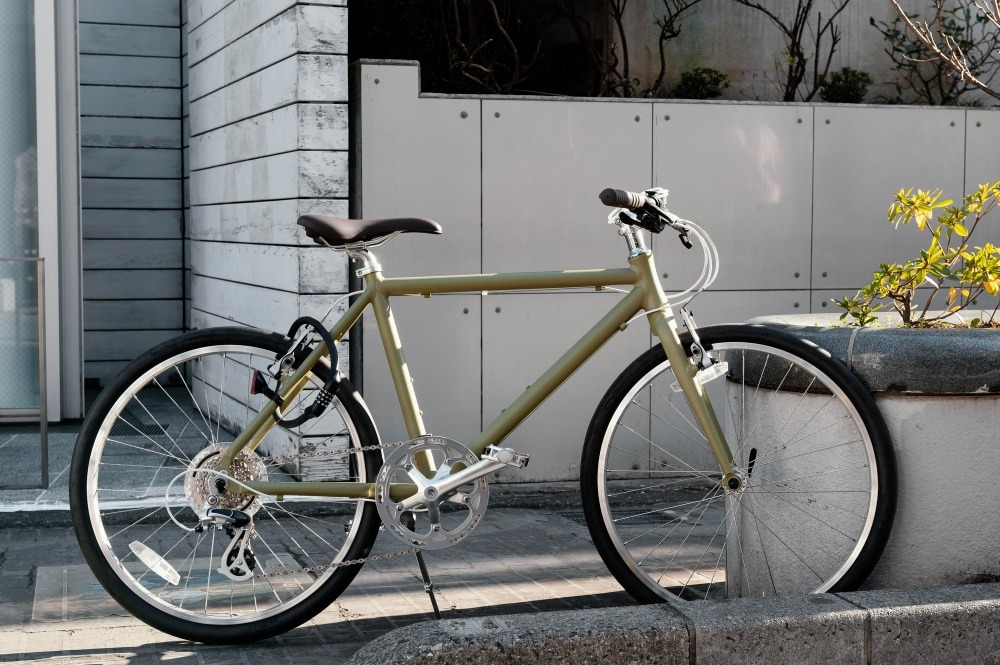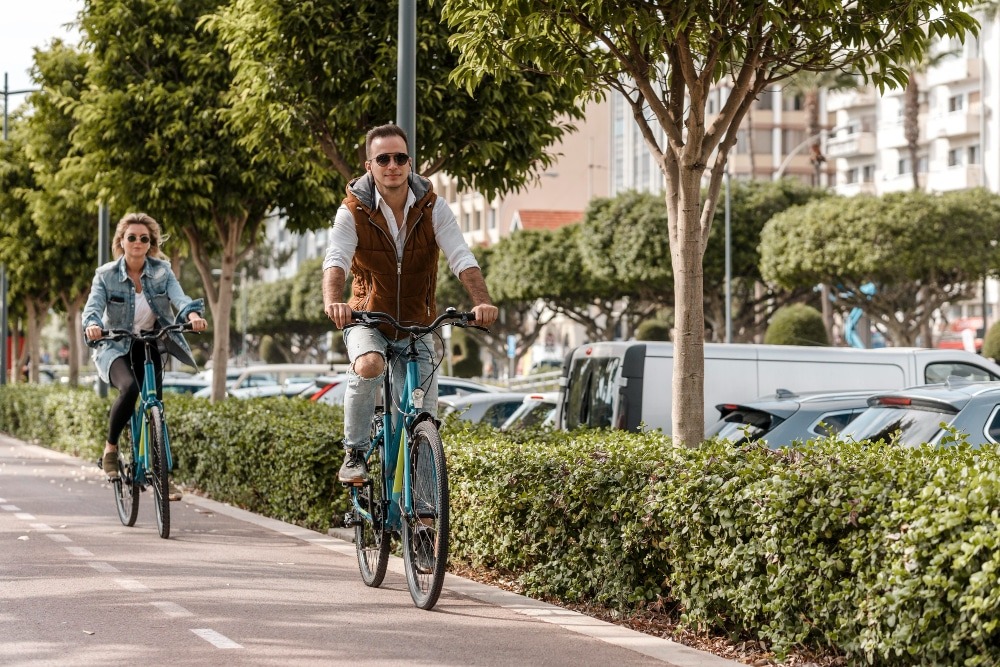Thinking about hitting the road on an electric bike but unsure about the legalities? E-bikes, with their electric motors and batteries that assist with pedaling, offer a fantastic way to tackle hills and long distances without breaking a sweat.
But before you hop on, it’s essential to understand the laws and regulations that apply. Depending on where you live, these rules can vary significantly. In this article, we’ll break down what an e-bike is, how they’re classified, and what you need to know to ride legally and safely.
What is The Definition of an Electric Bicycle?

An electric bicycle, or e-bike, is a regular bike equipped with an electric motor to assist with pedaling or to propel it without pedaling.
Now, let’s break it down. An e-bike looks like your typical bicycle but has a motor and sometimes a throttle. The motor’s job is to make pedaling easier (pedal-assist), while the throttle can move the bike without any pedaling at all.
On a federal level, an e-bike must meet three criteria:
- It has two or three wheels and operable pedals.
- The electric motor is less than one horsepower (750 watts).
- Its maximum speed is 20 mph.
E-bikes are also classified into three classes based on their motor and speed capabilities:
- Class 1: Pedal-assist only, with a maximum assisted speed of 20 mph.
- Class 2: Throttle-assisted, but also limited to a top speed of 20 mph.
- Class 3: Pedal-assist only, with a maximum assisted speed of 28 mph.
However, different states have their own classifications and rules about e-bikes. So, it’s essential to check your local laws to know exactly what applies to you.
What Should I Know Before Buying an Electric Bike?

Before buying an electric bike, it’s crucial to understand the laws in your state and the requirements for operating an e-bike.
Check e-bike laws in your state
E-bike laws vary by state, so it’s crucial to know what’s legal where you live. Research your state’s regulations to ensure you’re compliant with local requirements.
License requirements
In some states, you may need an owner’s permit or a driver’s license to operate an e-bike. Check your state’s specific licensing requirements before you ride.
Registration
Find out if you need to register your e-bike with local authorities. Some states require registration similar to motor vehicles, while others do not.
Insurance
Check if you’re required to carry insurance for your e-bike. While some states mandate insurance, others may leave it optional, so verify your local rules.
Classes of e-bikes
E-bikes are categorized into different classes based on motor wattage and speed. Understanding these classes will help you choose the right e-bike and stay within legal limits.
Helmet laws
Helmet use for e-bike riders is mandated in some states. Make sure to know if your state requires you to wear a helmet for safety and legal compliance.
Minimum age
There might be age restrictions for riding an e-bike in your state. Ensure you or your young riders meet the minimum age requirement to avoid any legal issues.
Where to ride
Confirm where you’re allowed to ride your e-bike, whether it’s on sidewalks, trails, or parks. Different states and municipalities have specific rules about where e-bikes can go.
Specific state laws
Finally, be aware of any other state laws or local ordinances that apply to electric motors. Knowing these details will help you avoid fines and penalties.
Knowing these details will help you make an informed decision and ensure you’re riding legally and safely.
Street Legal Requirements for Electric Bikes

Understanding the legal requirements for electric bikes on the street is essential before hitting the road. Different countries and states have their own rules, so it’s important to know what’s required where you live.
United States
In the US, federal law defines an e-bike as a bicycle with a motor of no more than 750 watts and a top speed of 20 mph on motor power alone. However, states can have different laws and classifications.
For instance, some states use a three-class system to distinguish between pedal-assist and throttle modes with varying speed limits. States like California, New York, and Florida allow e-bikes on public roads or paths, but local laws can differ, so always check.
United Kingdom
In the UK, an e-bike, or electrically assisted pedal cycle (EAPC), must have pedals that can propel it, a motor no stronger than 250 watts, and a top speed of 15.5 mph on motor power alone.
EAPCs are treated like regular bicycles, meaning no license, registration, or insurance is needed. Riders must be at least 14 years old and wear a helmet. Bikes that don’t meet these criteria are classified as mopeds or motorcycles.
European Union
The EU defines an e-bike as a bicycle with a motor of no more than 250 watts and a maximum speed of 25 km/h (15.5 mph) when the rider is pedaling.
Known as pedelecs, these bikes comply with the European Standard EN 15194 and don’t require a license, registration, or insurance. Bikes exceeding these limits are classified as speed pedelecs and must follow different regulations.
Australia
Australia’s e-bike laws define them as bicycles with a motor of no more than 250 watts and a top speed of 25 km/h on motor power alone. These power-assisted bicycles require no license, registration, or insurance. Riders must be at least 16 years old and wear a helmet.
New Zealand
In New Zealand, an e-bike is defined as a bicycle with a motor of no more than 300 watts and a maximum speed of 32 km/h (20 mph) on motor power alone.
These low-powered vehicles are treated like regular bicycles, with no need for a license, registration, or insurance. Riders must be at least 14 years old and wear a helmet.
Canada
Canadian law classifies e-bikes as bicycles with a motor of no more than 500 watts and a top speed of 32 km/h (20 mph) on motor power alone. These power-assisted bicycles don’t require a license, registration, or insurance. The minimum age for riding an e-bike in Canada is 16, and helmets are mandatory. Study: E-bike safety and regulations in various countries
By understanding and following these requirements, you can ensure a safe and legal ride on your e-bike.
Consequences of Violating the Electric Bike Law
Violating electric bike laws can lead to serious consequences such as fines, penalties, or even imprisonment, depending on the offense and location.
If your e-bike exceeds the legal power or speed limits, you might need to register it as a motor vehicle.
Failure to do so could result in charges for driving without a license, insurance, or registration. Riding in prohibited areas, like certain roads or trails, can also lead to fines or other penalties from authorities.
To steer clear of these issues, make sure you’re familiar with and follow the local laws governing electric bikes. Being responsible ensures not only your safety but also a hassle-free riding experience.
Where am I allowed to Ride My E-bike?

You can generally ride your electric bike on roadways and anywhere a regular bicycle is allowed, but specific rules can vary by state and local laws.
In most places, e-bikes can be used on roads and bike paths. For example, New York City allows class 1, 2, and 3 e-bikes to use bike lanes and streets with speed limits of up to 30 mph. However, some areas have restrictions; Carlsbad, California, recently banned e-bikes from sidewalks.
It’s important to know the rules for your specific location, as they can differ significantly. Traditional bikes may be allowed on certain paths, whereas e-bikes are not. Similarly, off-road biking rules vary, with some trails permitting traditional bikes but not e-bikes. Always look for signs and local guidelines to avoid fines and enjoy a safe ride.
Conclusion
Riding an electric bike can be a fun and efficient way to get around, but it’s essential to understand the laws and regulations that apply. From federal definitions to specific state and country requirements, knowing where you can ride and what you need to legally operate your e-bike is crucial.
Always check local laws regarding licensing, registration, insurance, and safety gear like helmets. By staying informed and compliant, you can enjoy your e-bike safely and legally, avoiding fines and penalties. Happy riding!
FAQs
Rules about riding e-bikes on sidewalks vary by location. Some places, like Carlsbad, California, have banned e-bikes on sidewalks, so always check local laws before riding.
In most places, you do not need a license to ride an e-bike, but some states may have specific licensing requirements, especially for higher-class e-bikes.
Age restrictions for riding e-bikes vary by state and country. For example, the minimum age is 14 in the UK and New Zealand, while it is 16 in Canada and Australia.
Helmet laws for e-bike riders differ by location. Many states and countries mandate helmet use for safety, so check your local requirements.
E-bikes are classified into three classes: Class 1 (pedal-assist only, up to 20 mph), Class 2 (throttle-assisted, up to 20 mph), and Class 3 (pedal-assist only, up to 28 mph). Understanding these classes helps ensure you comply with local laws.






